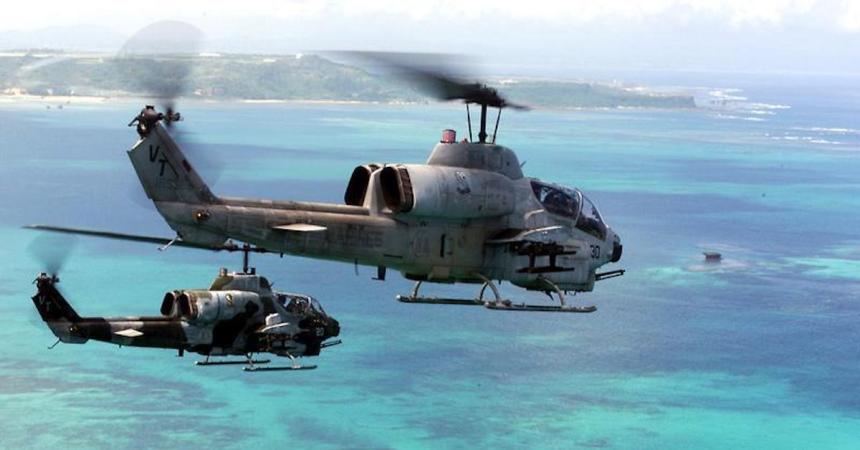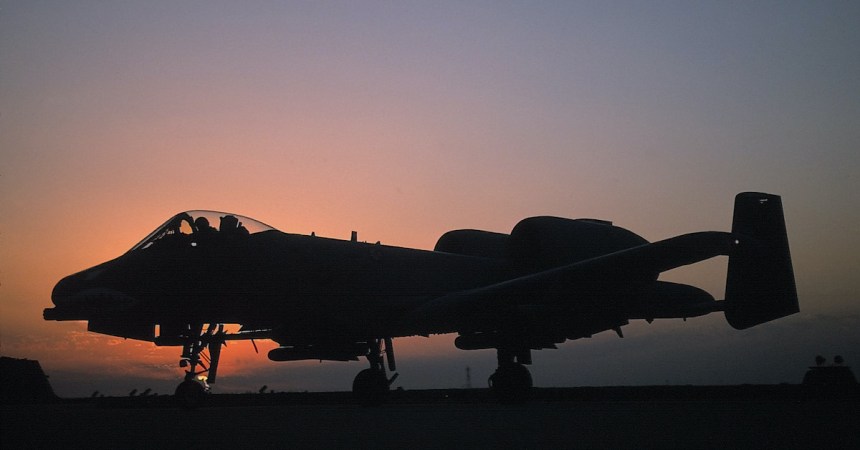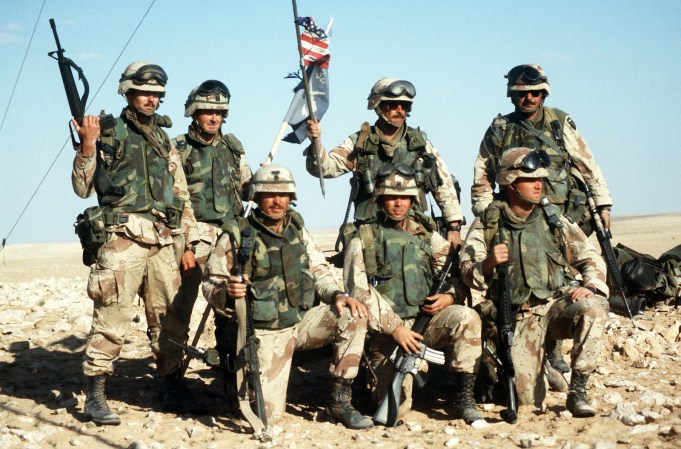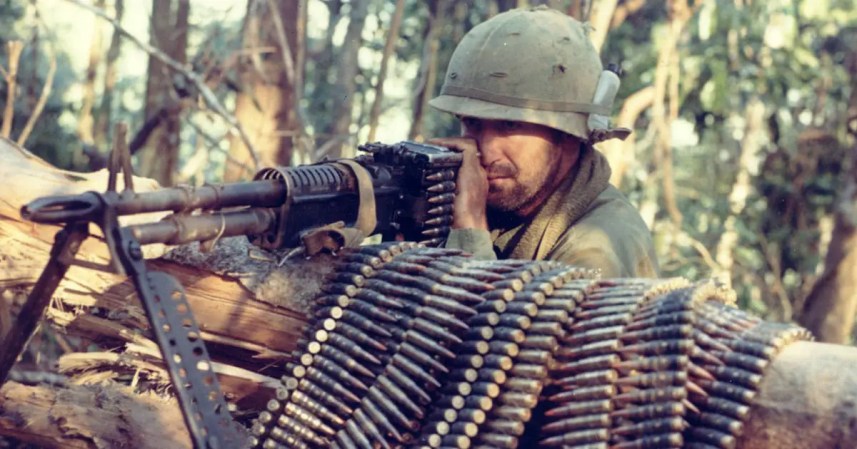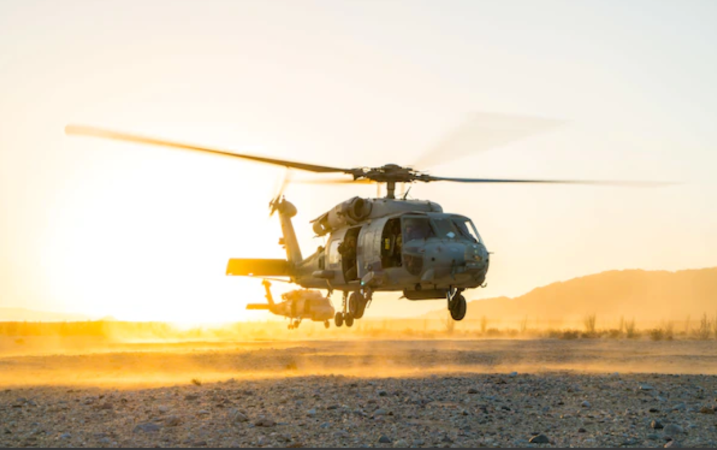For more than 50 years of rotary wing aviation, lots of helicopters have come and gone from the U.S. military. But only one is still in service — the H-1 “Huey.”

Technically there are two versions of the Huey still flying, the UH-1Y Venom and AH-1Z Viper — both in service with the Marine Corps. These aircraft are heavily updated from their initial production models but will be in service with the Marines for years to come.
The UH-1 first entered service with the U.S. Army in 1959 as a utility helicopter. Produced by Bell Helicopter, the UH-1 was the first turbine powered helicopter to enter service. Although officially named the Iroquois, it received the nickname “Huey” from its original designation, HU-1A. These initial A models first saw service with the 101st Airborne, the 82nd Airborne, and the 57th Medical Detachment.
The 57th Medical Detachment would be the first unit to employ the Huey in Vietnam in 1962.

As American involvement in Vietnam escalated so did the Huey’s. The initial A model’s shortcomings soon gave way to the UH-1B with a longer cabin and more powerful engine. Continued development led to the C and D variants. The “Charlie” model was outfitted with external weaponry and operated as a gunship. The D model was another expansion of the “B,” gaining 41 more inches of cabin space increasing its capacity to fifteen feet. This meant it had two pilots, two door gunners, and could still carry an entire infantry squad. It was this version that would first see extensive use by the U.S. Army in Vietnam.
In 1962 the Marine Corps adopted the UH-1E version of the Huey, which was modified to their specifications.
Once employed in Vietnam, the Huey served in every conceivable role. It performed troop transport duties, general support, MEDEVAC, and search and rescue. It was also loaded with weapons and used as a gunship.
Rocket-armed Hueys became known as “Hogs” while gun-toting helos were dubbed “Cobras.” Troop transport versions were nicknamed “Slicks” — a reference to their slick sides that held no weapons stations. However, some of these gunship roles were taken over by a new model, the UH-1G.
In 1966 the Army began receiving the UH-1G “HueyCobra” a reference to its lineage and its mission. By 1967 the “U” was replaced by an “A,” designating the helicopter as the attack platform that it truly was. While it shared many parts with its utility brother, the new Cobras were designed specifically as gunships, mounting stubby wings for weapons and carrying a 20mm cannon under the nose.
The new helicopters provided armed escort for air assaults, armed reconnaissance, and close air support for troops on the ground.
During the Vietnam War over 7,000 Hueys were deployed and flew over 7.5 million flight hours with the vast majority in service with the Army. Over 3,000 were lost to combat operations along with over 2,700 pilots, crew, and passengers. Hueys evacuated more than 90,000 patients from the battlefield, greatly increasing the survival rate of soldiers wounded in combat. It is estimated that over 40,000 helicopter pilots served in Vietnam, most of them flying Hueys.
The more than 3,000 Hueys — mostly H variants — that survived the war would be the backbone of the military’s post-war helicopter fleet. Late in the Vietnam War the Marine Corps bought the more powerful twin-engine UH-1 that would enter service as the UH-1N. While the Marines continued development of the Huey, the Army began a search for a new helicopter that led to the acquisition of the new UH-60 Black Hawk.
The Black Hawk would replace the Huey as the Army’s primary utility helicopter though it would retain a number for training and other purposes well into the 2000’s.
The UH-1N would continue in Marine Corps service as a light utility helicopter for another three decades, seeing service around the world. When the UH-1s were upgraded to twin-engine models, the AH-1 Cobras received the same treatment, becoming the AH-1J SeaCobra. In addition to receiving new engines, the Cobra also got improved M197 20mm cannon.
Again, the Army went a different route and developed the AH-64 Apache attack helicopter. The Marines were denied funding to acquire a naval version of the Apache. This left the Marines no choice but to continue using the AH-1. More updates followed, including the AH-1T and the AH-1W, known as the “Whiskey Cobra.” These versions included more powerful engines and improved avionics and weapons capabilities.
When the Marines were once again denied the opportunity to acquire the Apache in 1996, they instead awarded a contract to Bell Helicopter, the H-1 Upgrade Program, to modernize and increase commonality for their aging fleets of UH-1Ns and AH-1Ws. This program resulted in the new and improved UH-1Y Venom and AH-1Z Viper. These aircraft have 84 percent common components, which decreases maintenance costs. These new versions began delivery in 2006 and have seen action with the Marines in Afghanistan.
The latest Viper and Venom models mean the Huey is one of the few, if not only, system to have variants run from A to Z. From the workhorse of the Vietnam War to the deserts of the Middle East, the Huey has been there for American troops through all conflicts of the past 50 years.
With at least a decade of service still ahead, the Huey family of helicopters will serve well beyond 60 years of continuous service for the American military.



